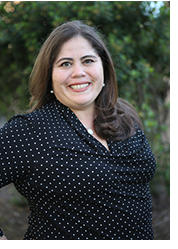The benefits
Focusing on individual experiences and pairing them with documentary evidence helps students set aside implicit assumptions while thinking through topics such as public health and undocumented immigration, says Soto Laveaga: “These issues are inherently human, and you have to introduce students to ethnographic material to truly understand the people behind the numbers.”
The challenges
Personal stories can bring out strong emotions and opinions from students. Soto Laveaga views such instances as important teaching moments, and suggests incorporating historical examples to illustrate continuity and change in explaining how border health policies are often entangled with discriminatory practices.
Takeaways and best practices
-
Offset individual stories with big questions.
Soto Laveaga asks open-ended questions to be integrated with discussion of individual stories, such as, “Is disease a static concept?” This allows her to understand her students’ perspectives and demonstrate how answers to these questions may change over time.
-
Employ first-person narrative.
Students are required to interview an immigrant and then write—and recite—the oral history in the first person. This puts them in someone else’s shoes and can have the powerful effect of “suddenly changing the experience into something that could happen to you.”
-
Engage with relatable material.
Soto Laveaga suggests that instructors have an obligation to relate to students. She tries to understand what interests them, and chooses relatable readings, with protagonists close to students’ age, for example.
Bottom line
“It’s not just simply about relatability. It is also about analytics that might make them uncomfortable, but that is partly what teaching is.” This approach engenders empathy, but more importantly teaches the ethnographic skills needed to be an historian, going beyond the classically understood methods of archival research.
 Gabriela Soto Laveaga, Professor of the History of Science, illustrates how combining nineteenth century documents with oral histories can help unpack complex current issues and disrupt certain assumptions on topics such as undocumented border crossings, addiction, and disease along our southern border. All topics are covered in HISTSCI 140 - The Border: Race, Politics, and Health in Modern Mexico, in which she challenges students to expand their own perspectives on these current themes through a variety of assignments including an oral history of an individual.
Gabriela Soto Laveaga, Professor of the History of Science, illustrates how combining nineteenth century documents with oral histories can help unpack complex current issues and disrupt certain assumptions on topics such as undocumented border crossings, addiction, and disease along our southern border. All topics are covered in HISTSCI 140 - The Border: Race, Politics, and Health in Modern Mexico, in which she challenges students to expand their own perspectives on these current themes through a variety of assignments including an oral history of an individual.
